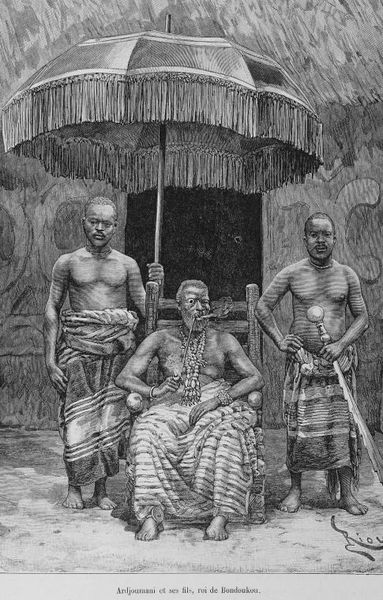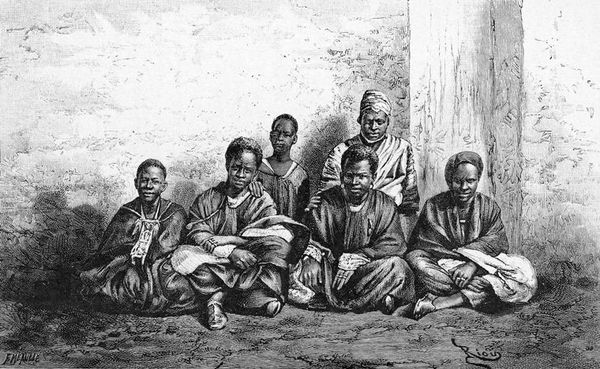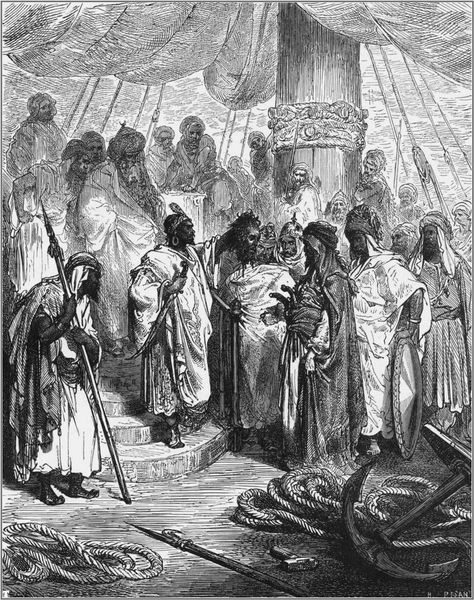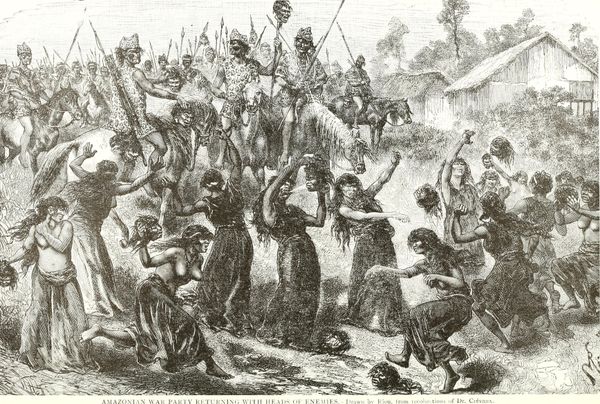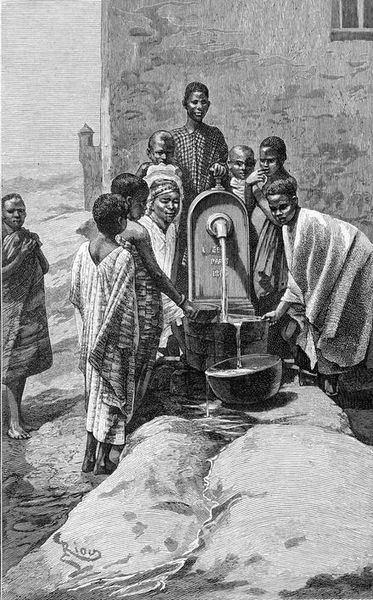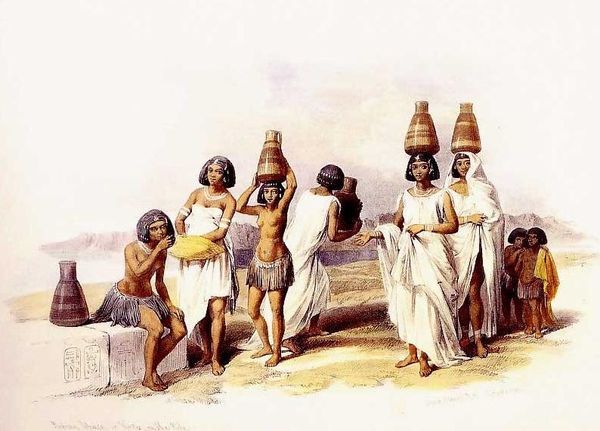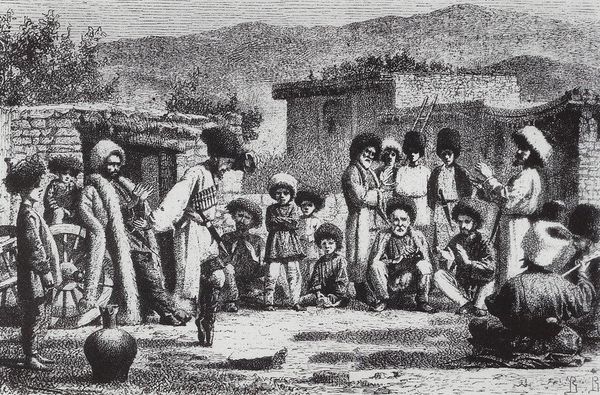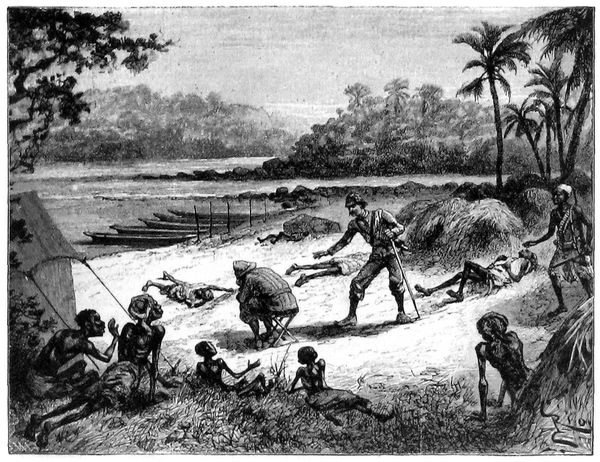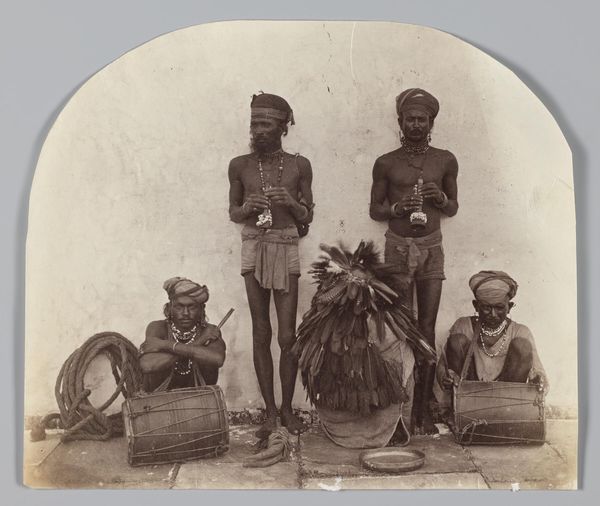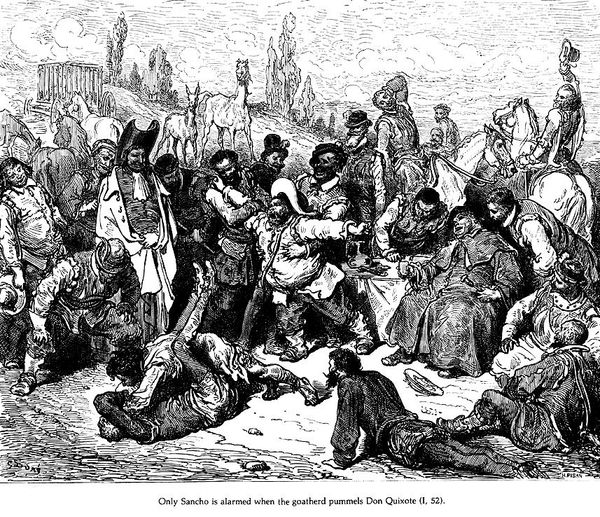
Msiri's Interpreter and Spies in the Stairs Expedition's Camp at Bunkeya. During a Stand-off in Negotiations, This Group Arrived in the Expedition's Fortified Camp with a Message from Msiri (note the Tent and Palisade in the Background, Right). the Drummers Kept Playing All the Time, and the Expedition Only Found out Later These were Talking Drums, and the Drummers were Sending Information About the Camp's Defences, Number of Armed Men and Their Deployment to Msiri.
0:00
0:00
print, engraving
#
portrait
#
african-art
#
narrative-art
# print
#
engraving
Copyright: Public domain
Edouard Riou made this engraving of ‘Msiri's Interpreter and Spies’ for a French readership, as an illustration in a popular book. It tells of a delegation visiting a European expedition in Central Africa. We see a group of African men, some carrying drums, approaching an encampment. The image implies a contrast between the apparent openness of the delegation and their hidden intentions, as the drums are used to gather intelligence. This tension speaks to the wider colonial context of the 19th century, when European powers were expanding their influence in Africa, often through deceptive means. The incident took place in the 1890s, during a period of intense European competition for African territory. Riou likely never visited Africa himself, so the image is based on second-hand accounts. We must consider how it might reflect European biases and assumptions about African societies. To understand this image fully, we need to consider the social and political context in which it was made and consumed. By examining archival sources, travel writing and the history of European colonialism, we can gain a deeper appreciation of the complex relationship between Europe and Africa in the 19th century.
Comments
No comments
Be the first to comment and join the conversation on the ultimate creative platform.

